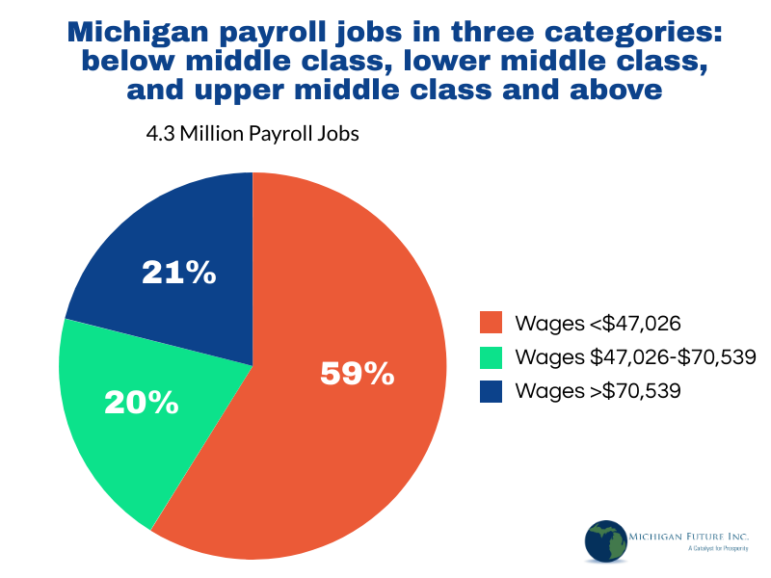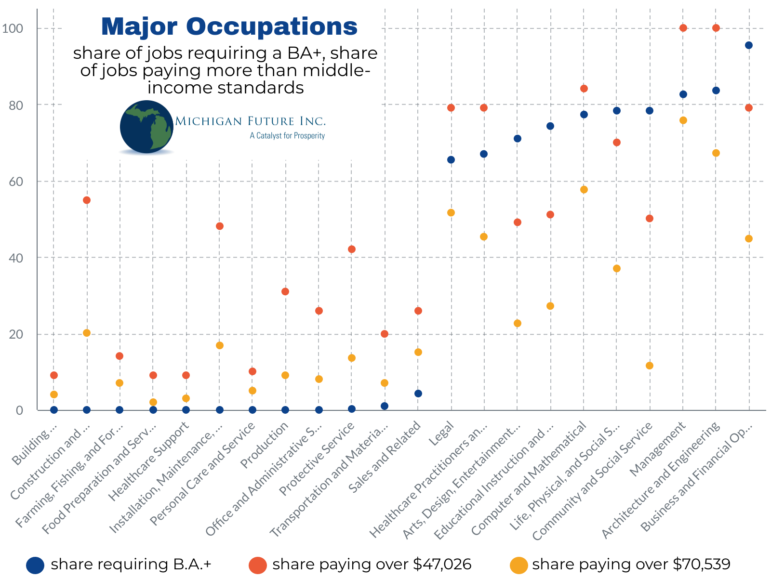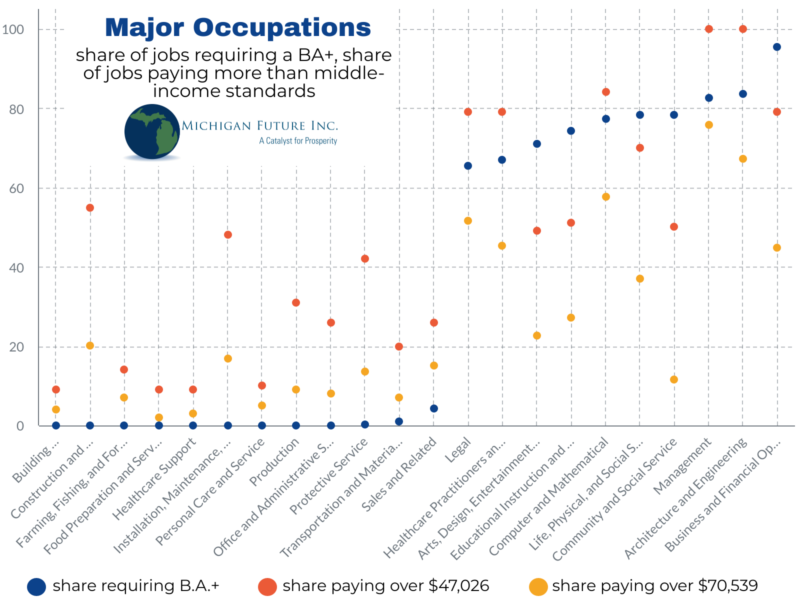At Michigan Future we are always working to understand the reality of the economy and labor market in Michigan. We try to get beyond the assumptions and the holdover picture we have of how people earn money, and how much of it, that we still carry around from the 20th century. Today we’re sharing two new infographics that powerfully organize some data recently analyzed for us by Don Grimes of the University of Michigan. These data reinforce the fact that Michigan’s economy is divided quite dramatically into two major tiers, where working families in the lower tier struggle to afford basic necessities. And what puts people in the higher tier is largely the possession of a bachelor’s degree.
The majority of jobs in Michigan don’t pay a middle class wage
In the first chart, you can see that Michigan’s job market is not dominated by good jobs with middle class wages. Instead, 59 percent of Michigan jobs in the strong economy of 2019 do not pay enough to put a family of three in the lower middle class, or $47,026. (The middle class standards we adopted were calculated by the Research Seminar at Quantitative Economics at U of M, based on a methodology adopted by the Pew Research Center and cost-of-living adjusted for Michigan. These measures represent income thresholds for a family of three.) Only 20 percent of jobs pay between $47,026 and $70,539. And 21 percent of jobs pay enough, $70,539, to support a family of three in the upper middle class or above.

Most jobs that pay middle class wages require a B.A.
We overlaid the same data with information from the Michigan Bureau of Labor Market Information and Strategic Initiatives from 2018, about the share of jobs in each occupation that require a bachelor’s degree.
The second chart lists major occupations in increasing order by share of jobs in that occupation that require a B.A. (the blue dot). For each occupation, we also show the share of jobs that pay over $47,026 (orange dot) and the share of jobs that pay over $70,539 (yellow dot)–in other words, the share of jobs that would pay for a family of three to enter the lower middle class, or to live in the upper middle class or above. For example, in food preparation and service jobs, zero jobs require a B.A., nine percent pay over $47,026, and only two percent pay over $70,539.
This chart shows starkly what we’ve been calling our “two-tier economy.” The difference between the tiers? The possession of a B.A. On the left, you can see 12 occupation categories where very few jobs require a B.A. (in each occupation, less than five percent require a B.A., with many at or near zero). Then, between the categories of “sales and related” and “legal,” there’s a huge jump. From 4.3 percent of jobs requiring a B.A. to 65.4 percent. And you see a similar jump in earnings.

This shows very clearly that the fact that almost two in five Michigan families can’t afford basic necessities isn’t because two in five Michigan adults is irresponsible, lazy, or doesn’t value work. The people earning lower wages are earning lower wages because a preponderance of jobs in our economy simply do not pay well.
As we continue to look at data on the economy, we continue to learn more about how the fundamental structure of our economy leaves so many families struggling to pay the bills. There are simply too many jobs in our labor market that don’t pay a middle-class wage.







